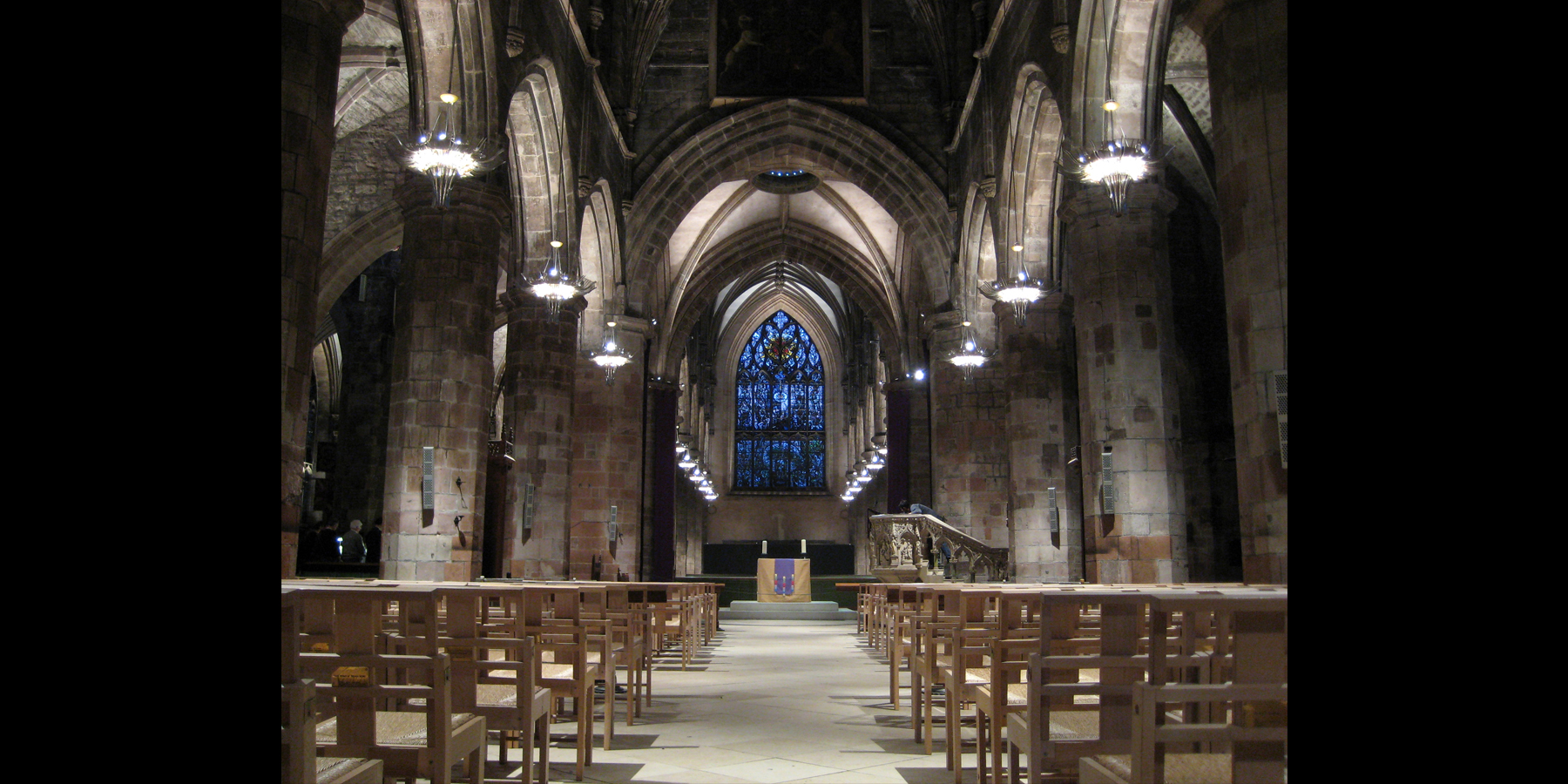St Giles Cathedral, Edinburgh, Scotland
Originally founded in 1124, St Giles was made into a Cathedral by Royal Decree in 1633.
As part of a comprehensive programme of building renewal, a new contemporary lighting scheme was designed by dpa.
Key lighting design elements were identified to enhance the uses of the space and visitor experience, these were:
– Provide increased illumination levels to enhance worship.
– Reveal the architecture and enhance the interior of the cathedral.
– Utilise current luminaire and lamp technology, allied with modern lighting control methods to maximise the efficiency and flexibility of the installation.
– Incorporate fully integrated emergency lighting for the interior of the cathedral.
A custom-designed multi-functional chandelier was developed to provide good levels of ambient illumination and accommodate a number of concealed accent lighting elements.
Directional downlights incorporated into the chandelier are utilised to provide illumination to the main body of the church and also highlight the vaulted ceilings and arches. Each lighting element is separately controllable, enabling a wide range of pre-programmed lighting scenes. Emergency lighting is provided by a single non-maintained downlight in the base of each chandelier.
In addition, concealed uplights are located on the window sills strongly expressing the arched stained glass window reveals, creating an additional layer of illumination enhancing the perimeter of the cathedral. The central communion table is highlighted with an array of discreet fibre-optic downlights, supplemented by directional low voltage spotlights located above the cornices in the sanctuary.
A series of bespoke music stands with integral warm white LED luminaires were also designed for the choir stalls located in the centre of the cathedral, in collaboration with Campbell & Arnott, the project architects.
Client: St. Giles Cathedral
Architect: Campbell & Arnott








